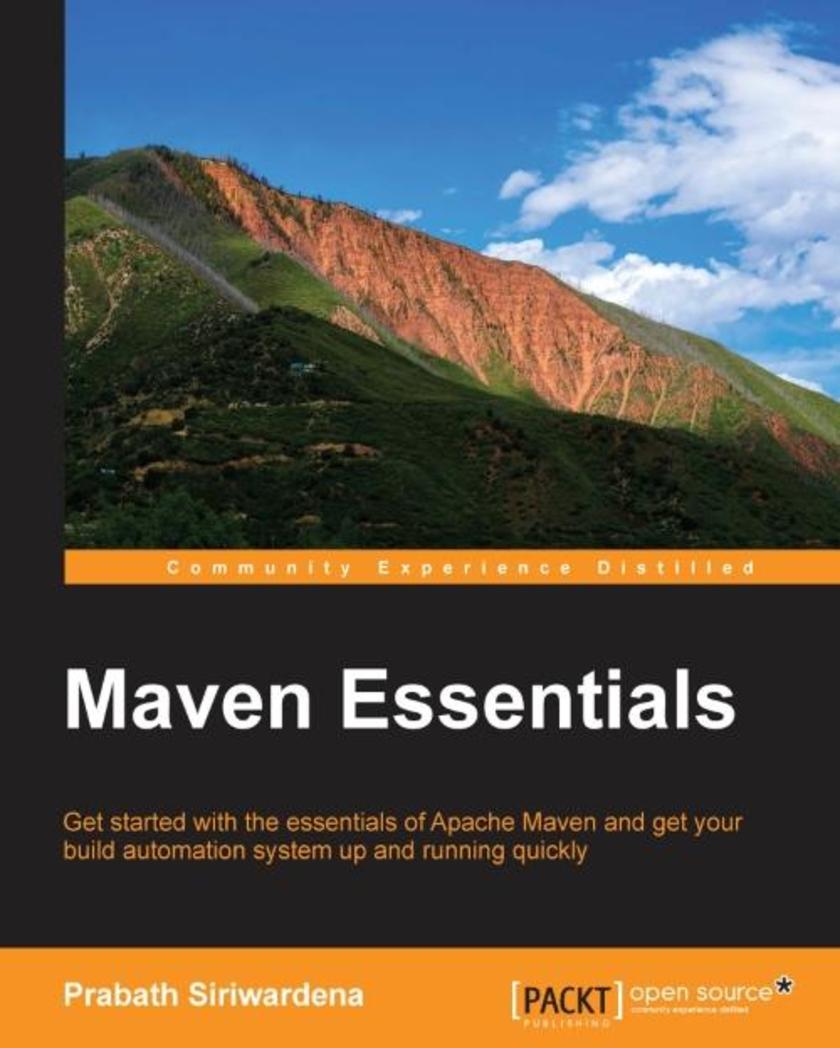
Maven Essentials
¥45.77
Get started with the essentials of Apache Maven and get your build automation system up and running quickly About This Book Explore the essentials of Apache Maven essentials to arm yourself with all the ingredients needed to develop a comprehensive build automation system Identify the extension points in Apache Maven and learn more about them in-depth Improve developer productivity by optimizing the build process with best practices in Maven using this compact guide Who This Book Is For The book is ideal for for experienced developers who are already familiar with build automation, but want to learn how to use Maven and apply its concepts to the most difficult scenarios in build automation. What You Will Learn Comprehend the key concepts in Apache Maven Build your own custom plugins and get to know how Maven extension points are used Troubleshoot build issues with greater confidence Optimize Maven’s configuration settings Write custom lifecycles and extensions Get hands-on and create a Maven assembly Explore the best practices to design a build system that improves developer productivity In Detail Maven is the #1 build tool used by developers and it has been around for more than a decade. Maven stands out among other build tools due to its extremely extensible architecture, which is built on of the concept of convention over configuration. It’s widely used by many open source Java projects under Apache Software Foundation, Sourceforge, Google Code, and more. Maven Essentials is a fast-paced guide to show you the key concepts in Maven and build automation. We get started by introducing you to Maven and exploring its core concepts and architecture. Next, you will learn about and write a Project Object Model (POM) while creating your own Maven project. You will also find out how to create custom archetypes and plugins to establish the most common goals in build automation. After this, you’ll get to know how to design the build to prevent any maintenance nightmares, with proper dependency management. We then explore Maven build lifecycles and Maven assemblies. Finally, you will discover how to apply the best practices when designing a build system to improve developer productivity. Style and approach This book is a practical and compact guide that will show you how to use Apache Maven in an optimal way to address enterprise build requirements. It provides technical guidance to get you started with Maven and build automation.
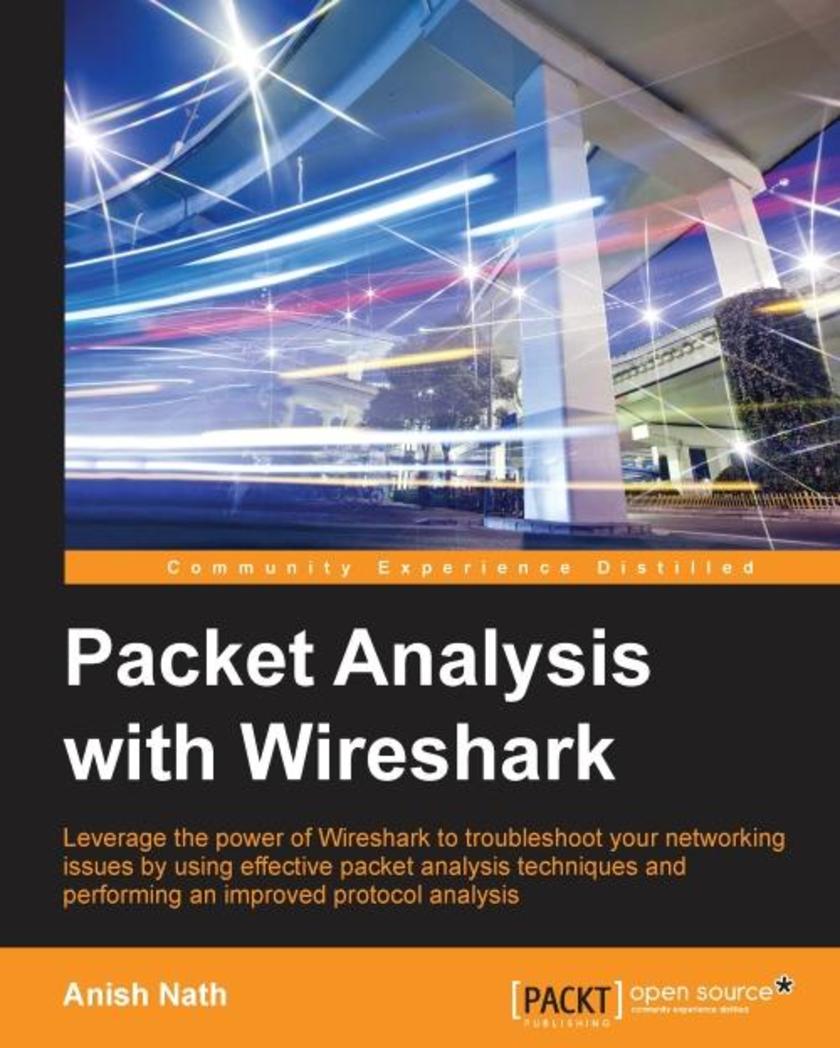
Packet Analysis with Wireshark
¥63.21
Leverage the power of Wireshark to troubleshoot your networking issues by using effective packet analysis techniques and performing improved protocol analysis About This Book Gain hands-on experience of troubleshooting errors in TCP/IP and SSL protocols through practical use cases Identify and overcome security flaws in your network to get a deeper insight into security analysis This is a fast-paced book that focuses on quick and effective packet captures through practical examples and exercises Who This Book Is For If you are a network or system administrator who wants to effectively capture packets, a security consultant who wants to audit packet flows, or a white hat hacker who wants to view sensitive information and remediate it, this book is for you. This book requires decoding skills and a basic understanding of networking. What You Will Learn Utilize Wireshark's advanced features to analyze packet captures Locate the vulnerabilities in an application server Get to know more about protocols such as DHCPv6, DHCP, DNS, SNMP, and HTTP with Wireshark Capture network packets with tcpdump and snoop with examples Find out about security aspects such as OS-level ARP scanning Set up 802.11 WLAN captures and discover more about the WAN protocol Enhance your troubleshooting skills by understanding practical TCP/IP handshake and state diagrams In Detail Wireshark provides a very useful way to decode an RFC and examine it. The packet captures displayed in Wireshark give you an insight into the security and flaws of different protocols, which will help you perform the security research and protocol debugging. The book starts by introducing you to various packet analyzers and helping you find out which one best suits your needs. You will learn how to use the command line and the Wireshark GUI to capture packets by employing filters. Moving on, you will acquire knowledge about TCP/IP communication and its use cases. You will then get an understanding of the SSL/TLS flow with Wireshark and tackle the associated problems with it. Next, you will perform analysis on application-related protocols. We follow this with some best practices to analyze wireless traffic. By the end of the book, you will have developed the skills needed for you to identify packets for malicious attacks, intrusions, and other malware attacks. Style and approach This is an easy-to-follow guide packed with illustrations and equipped with lab exercises to help you reproduce scenarios using a sample program and command lines.
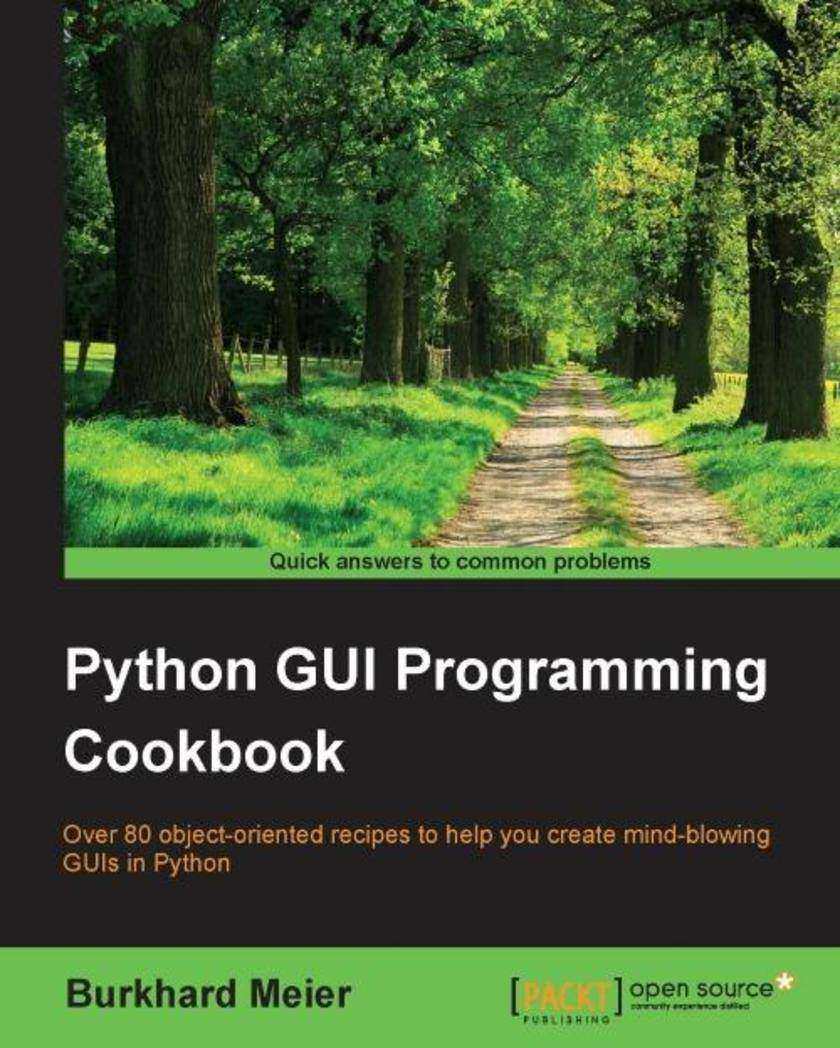
Python GUI Programming Cookbook
¥80.65
Over 80 object-oriented recipes to help you create mind-blowing GUIs in Python About This Book Use object-oriented programming to develop amazing GUIs in Python Create a working GUI project as a central resource for developing your Python GUIs Packed with easy-to-follow recipes to help you develop code using the latest released version of Python Who This Book Is For If you are a Python programmer with intermediate level knowledge of GUI programming and want to learn how to create beautiful, effective, and responsive GUIs using the freely available Python GUI frameworks, this book is for you. What You Will Learn Create amazing GUIs with Python’s built-in Tkinter module Customize the GUIs by using layout managers to arrange the GUI widgets Advance to an object-oriented programming style using Python Develop beautiful charts using the free Matplotlib Python module Use threading in a networked environment to make the GUIs responsive Discover ways to connect the GUIs to a database Understand how unit tests can be created and internationalize the GUI Extend the GUIs with free Python frameworks using best practices In Detail Python is a multi-domain, interpreted programming language. It is a widely used general-purpose, high-level programming language. It is often used as a *ing language because of its forgiving syntax and compatibility with a wide variety of different eco-systems. Its flexible syntax enables developers to write short *s while at the same time, they can use object-oriented concepts to develop very large projects. Python GUI Programming Cookbook follows a task-based approach to help you create beautiful and very effective GUIs with the least amount of code necessary. This book uses the simplest programming style, using the fewest lines of code to create a GUI in Python, and then advances to using object-oriented programming in later chapters. If you are new to object-oriented programming (OOP), this book will teach you how to take advantage of the OOP coding style in the context of creating GUIs written in Python. Throughout the book, you will develop an entire GUI application, building recipe upon recipe, connecting the GUI to a database. In the later chapters, you will explore additional Python GUI frameworks, using best practices. You will also learn how to use threading to ensure your GUI doesn’t go unresponsive. By the end of the book, you will be an expert in Python GUI programming to develop a common set of GUI applications. Style and approach Every recipe in this programming cookbook solves a problem you might encounter in your programming career. At the same time, most of the recipes build on each other to create an entire, real-life GUI application.
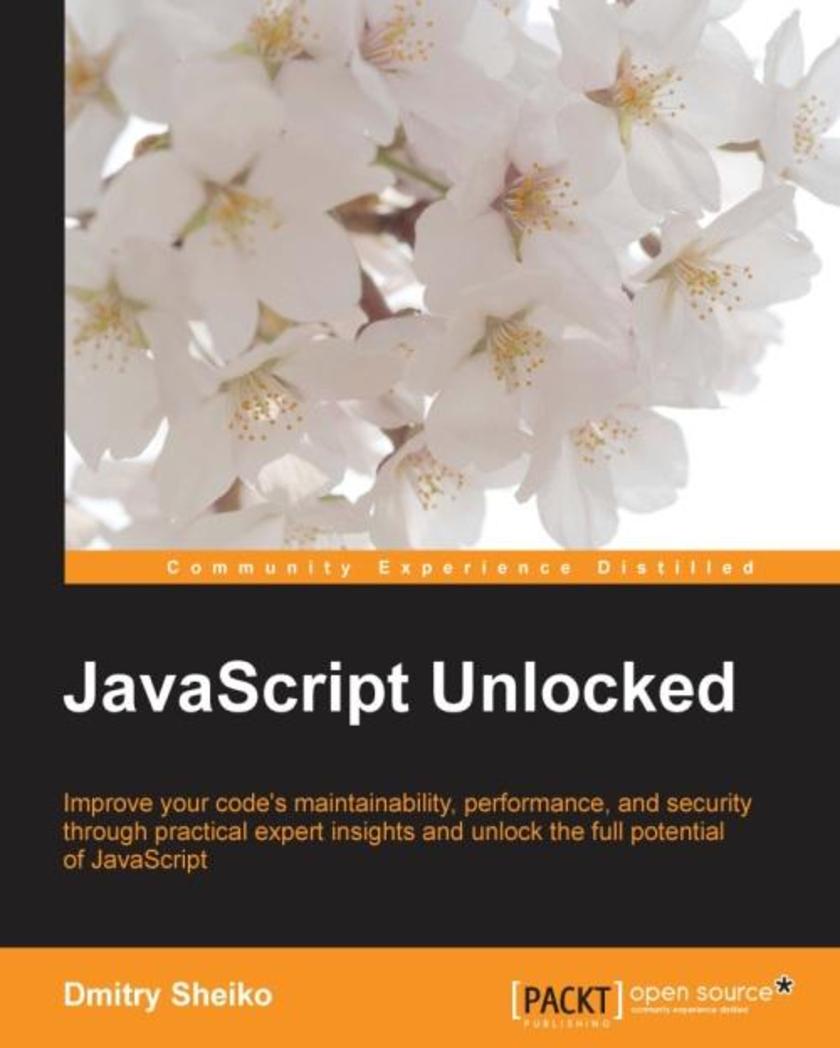
JavaScript Unlocked
¥54.49
Improve your code maintainability, performance, and security through practical expert insights and unlock the full potential of JavaScript About This Book Improve your JavaScript code for better maintainability and performance Discover how to implement scalable application architecture with JavaScript Learn to use JavaScript behind the browser, including its command-line tools, desktop apps, and native mobile apps Who This Book Is For JavaScript Unlocked is for those JS developers who want to see just how far they can push their favourite language through practical insight and techniques. What You Will Learn Make your code readable and expressive by using simple syntax of JavaScript Grasp existing JavaScript collections such as arrays and array-like objects Develop abstract data types in most effective way to extend JavaScript into a more flexible and powerful programming language Examine the pros and cons of JavaScript by implementing real-time code examples Flourish real-time mini-projects by using JavaScript on server side to develop desktop as well as mobile applications Work on parallel tasks with asynchronous JavaScript Improve code maintainability and readability and boost apps performance through JavaScript In Detail JavaScript stands bestride the world like a colossus. Having conquered web development, it now advances into new areas such as server *ing, desktop and mobile development, game *ing, and more. One of the most essential languages for any modern developer, the fully-engaged JavaScript programmer need to know the tricks, non-documented features, quirks, and best practices of this powerful, adaptive language. This all-practical guide is stuffed with code recipes and keys to help you unlock the full potential of JavaScript. Start by diving right into the core of JavaScript, with power user techniques for getting better maintainability and performance from the basic building blocks of your code. Get to grips with modular programming to bring real power to the browser, master client-side JavaScript *ing without jQuery or other frameworks, and discover the full potential of asynchronous coding. Do great things with HTML5 APIs, including building your first web component, tackle the essential requirements of writing large-scale applications, and optimize JavaScript’s performance behind the browser. Wrap up with in-depth advice and best practice for debugging and keeping your JavaScript maintainable for scaling, long-term projects. With every task demonstrated in both classic ES5 JavaScript and next generation ES6-7 versions of the language, Whether read cover-to-cover or dipped into for specific keys and recipes, JavaScript Unlocked is your essential guide for pushing JavaScript to its limits.Style and approachThis practice-oriented cookbook is packed full of code examples put in the form: problem, classical solution, and methods to optimize webpage in both JavaScript ES5 and ES6 language editions. But this thorough guide is best-suited to those who like to “learn by doing” as the topics are covered using real-life examples and tutorials.
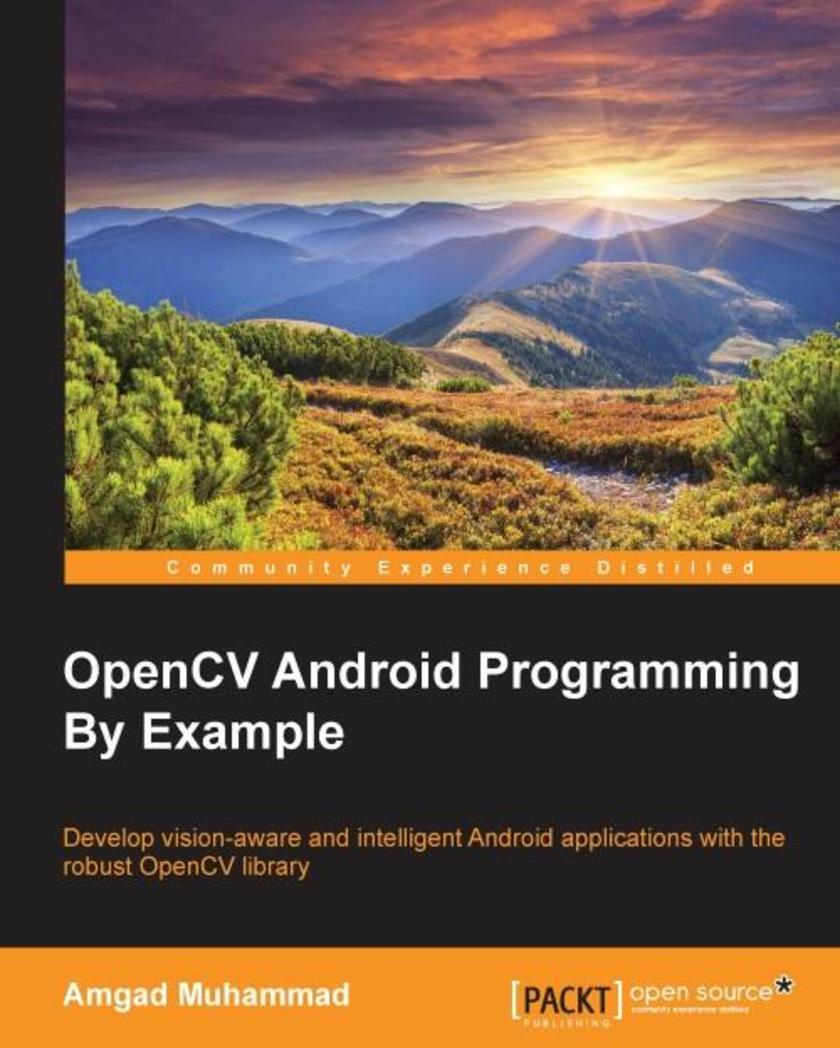
OpenCV Android Programming By Example
¥54.49
Develop vision-aware and intelligent Android applications with the robust OpenCV library About This Book This is the most up-to-date book on OpenCV Android programming on the market at the moment. There is no direct competition for our title. Based on a technology that is increasing in popularity, proven by activity in forums related to this topic. This book uniquely covers applications such as the Panoramic viewer and Automatic Selfie, among others. Who This Book Is For If you are an Android developer and want to know how to implement vision-aware applications using OpenCV, then this book is definitely for you. It would be very helpful if you understand the basics of image processing and computer vision, but no prior experience is required What You Will Learn Identify and install all the elements needed to start building vision-aware Android applications Explore image representation, colored and gray scale Recognize and apply convolution operations and filtering to deal with noisy data Use different shape analysis techniques Extract and identify interest points in an image Understand and perform object detection Run native computer vision algorithms and gain performance boosts In Detail Starting from the basics of computer vision and OpenCV, we'll take you all the way to creating exciting applications. You will discover that, though computer vision is a challenging subject, the ideas and algorithms used are simple and intuitive, and you will appreciate the abstraction layer that OpenCV uses to do the heavy lifting for you. Packed with many examples, the book will help you understand the main data structures used within OpenCV, and how you can use them to gain performance boosts. Next we will discuss and use several image processing algorithms such as histogram equalization, filters, and color space conversion. You then will learn about image gradients and how they are used in many shape analysis techniques such as edge detection, Hough Line Transform, and Hough Circle Transform. In addition to using shape analysis to find things in images, you will learn how to describe objects in images in a more robust way using different feature detectors and de*ors. By the end of this book, you will be able to make intelligent decisions using the famous Adaboost learning algorithm. Style and approach An easy-to-follow tutorial packed with hands-on examples. Each topic is explained and placed in context, and the book supplies full details of the concepts used for added proficiency.
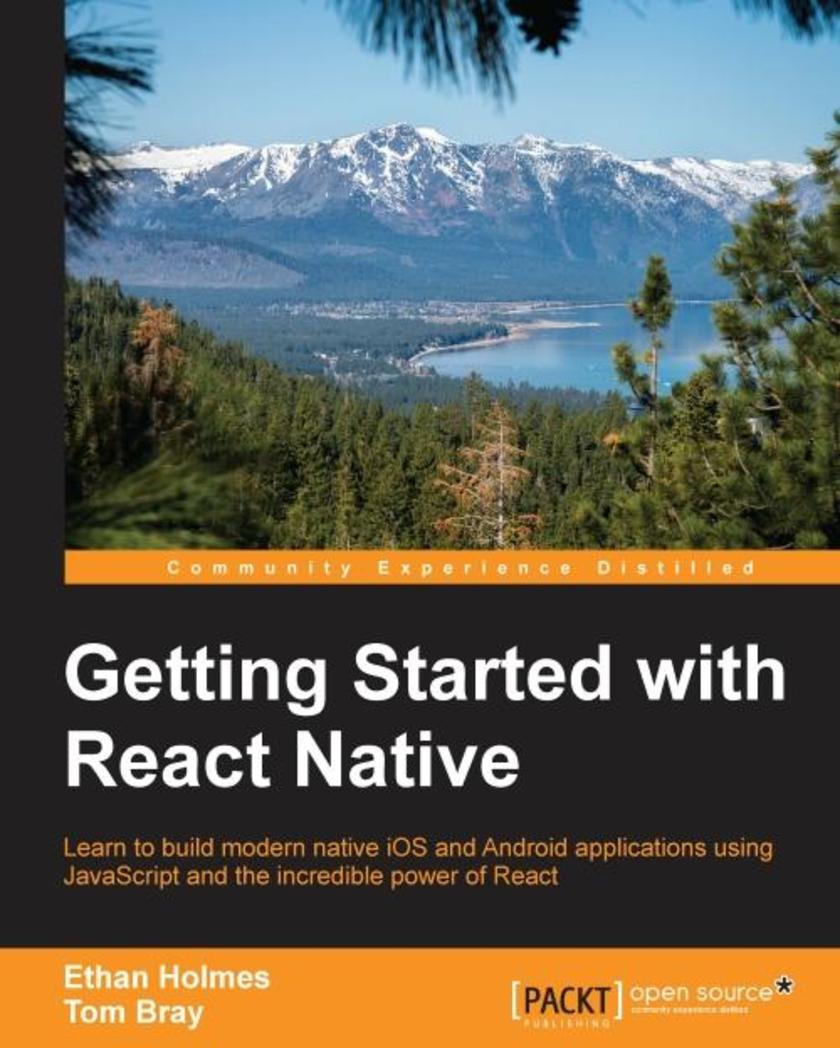
Getting Started with React Native
¥54.49
Learn to build modern native iOS and Android applications using JavaScript and the incredible power of React About This Book Learn to design and build a fully-featured application using the newest cutting-edge framework from Facebook Leverage your JavaScript skills to become a native app developer Develop custom UI components, implement smooth navigation, and access native features such as geolocation and local storage Who This Book Is For This book is for web developers who want to learn to build fast, good-looking, native mobile applications using the skills they already have. If you already have some JavaScript knowledge or are using React on the web, then you will be able to quickly get up and running with React Native for iOS and Android. What You Will Learn Set up the React Native environment on both devices and emulators Gain an in-depth understanding of how React Native works behind the scenes Write your own custom native UI components Learn the ins and outs of screen navigation Master the art of layout and styles Work with device-exclusive data such as geolocation Develop native modules in Objective-C and Java that interact with JavaScript Test and deploy your application for a production-ready environment In Detail React Native is a game-changing approach to hybrid mobile development. Web developers can leverage their existing skills to write mobile applications in JavaScript that are truly native without using cross-compilation or web views. These applications have all of the advantages of those written in Objective-C or Java, combined with the rapid development cycle that JavaScript developers are accustomed to. Web developers who want to develop native mobile applications face a high barrier to entry, because they are forced to learn platform-specific languages and frameworks. Numerous hybrid technologies have tried to simplify this process, but have failed to achieve the performance and appearance that users expect. This book will show you all the advantages of true native development that React Native has without the steep learning curve, leveraging the knowledge you already have. We do this by getting you up and running quickly with a sample application. Next, we’ll introduce you to the fundamentals of creating components and explain how React Native works under the hood. Once you have established a solid foundation, you will dive headfirst into developing a real-world application from start to finish. Along the way, we will demonstrate how to create multiple screens and navigate between them,use layout and style native UI components, and access native APIs such as local storage and geolocation. Finally, we tackle the advanced topic of Native modules, which demonstrates that there are truly no limits to what you can do with React Native. Style and approach This book provides a simple and easy way to build mobile applications in JavaScript. Each topic takes you through the life cycle of creating a fully-functional native app, with detailed explanations of the entire process.
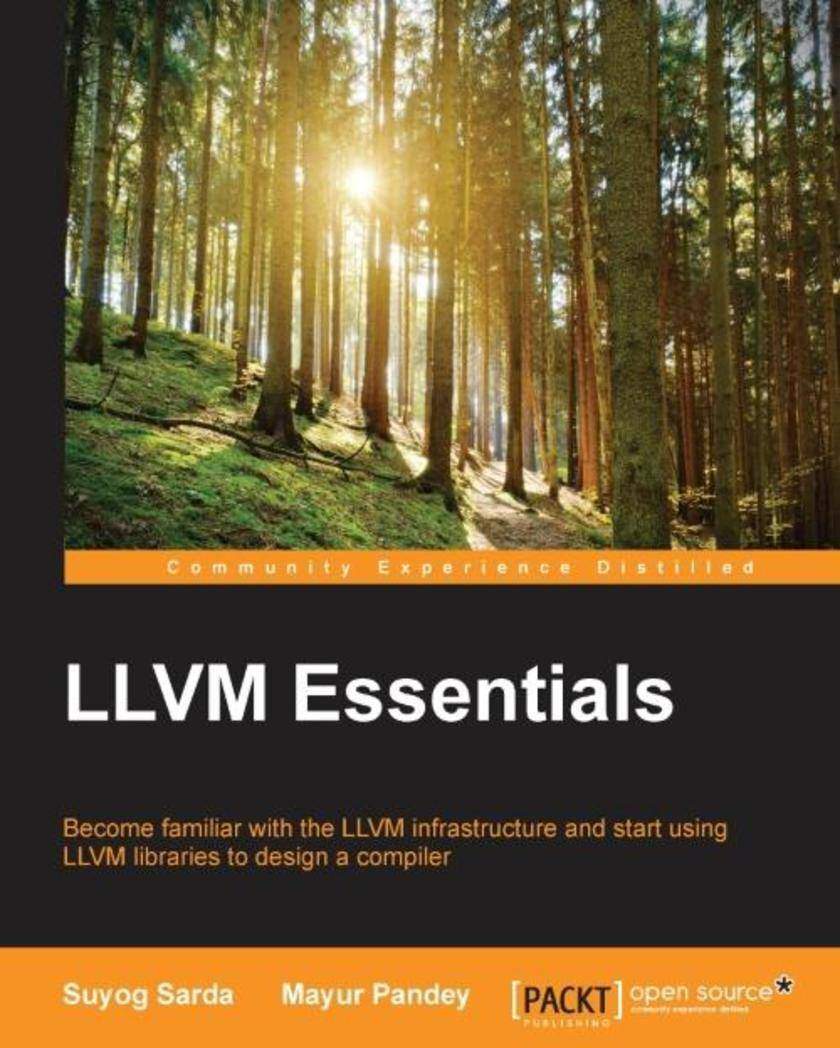
LLVM Essentials
¥45.77
Become familiar with the LLVM infrastructure and start using LLVM libraries to design a compiler About This Book Learn to use the LLVM libraries to emit intermediate representation (IR) from high-level language Build your own optimization pass for better code generation Understand AST generation and use it in a meaningful way Who This Book Is For This book is intended for those who already know some of the concepts of compilers and want to quickly get familiar with the LLVM infrastructure and the rich set of libraries that it provides. What You Will Learn Get an introduction to LLVM modular design and LLVM tools Convert frontend code to LLVM IR Implement advanced LLVM IR paradigms Understand the LLVM IR Optimization Pass Manager infrastructure and write an optimization pass Absorb LLVM IR transformations Understand the steps involved in converting LLVM IR to Selection DAG Implement a custom target using the LLVM infrastructure Get a grasp of C’s frontend clang, an AST dump, and static analysis In Detail LLVM is currently the point of interest for many firms, and has a very active open source community. It provides us with a compiler infrastructure that can be used to write a compiler for a language. It provides us with a set of reusable libraries that can be used to optimize code, and a target-independent code generator to generate code for different backends. It also provides us with a lot of other utility tools that can be easily integrated into compiler projects. This book details how you can use the LLVM compiler infrastructure libraries effectively, and will enable you to design your own custom compiler with LLVM in a snap. We start with the basics, where you’ll get to know all about LLVM. We then cover how you can use LLVM library calls to emit intermediate representation (IR) of simple and complex high-level language paradigms. Moving on, we show you how to implement optimizations at different levels, write an optimization pass, generate code that is independent of a target, and then map the code generated to a backend. The book also walks you through CLANG, IR to IR transformations, advanced IR block transformations, and target machines. By the end of this book, you’ll be able to easily utilize the LLVM libraries in your own projects. Style and approach This book deals with topics sequentially, increasing the difficulty level in a step-by-step approach. Each topic is explained with a detailed example, and screenshots are included to help you understand the examples.
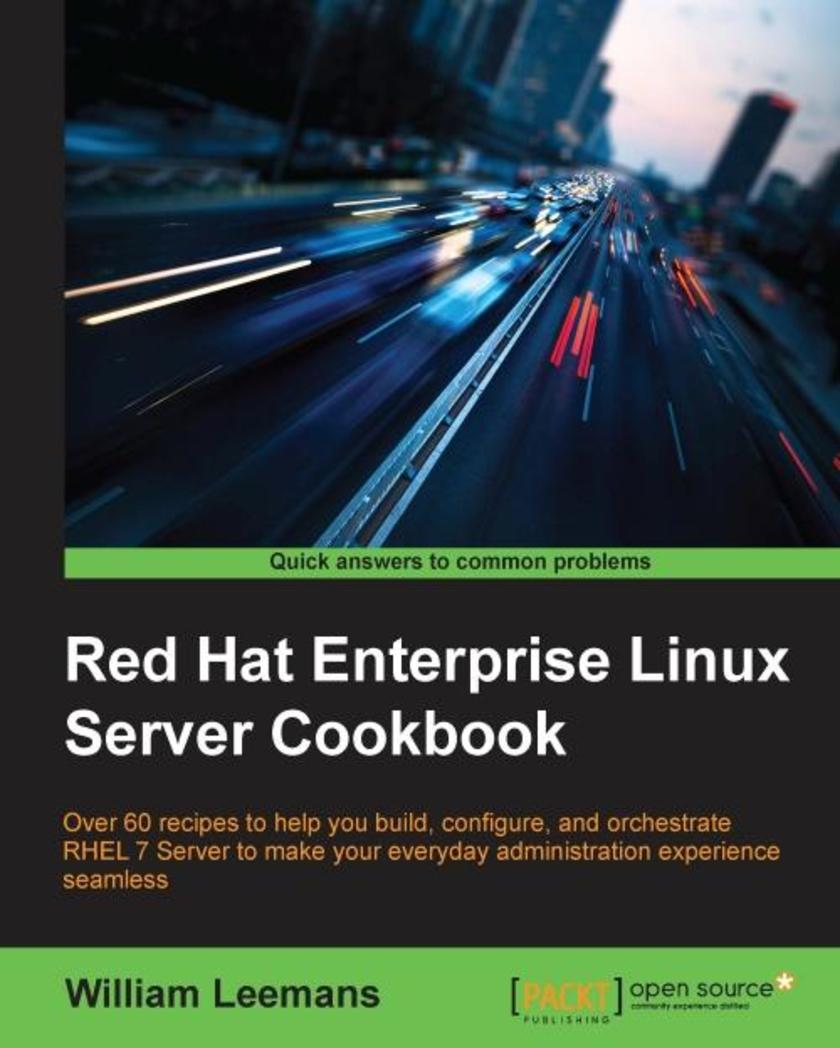
Red Hat Enterprise Linux Server Cookbook
¥90.46
Over 60 recipes to help you build, configure, and orchestrate RHEL 7 Server to make your everyday administration experience seamless About This Book Create fully unattended installations and deploy configurations without breaking a sweat Discover and kick-start the newest RHEL 7 configuration and management tools through an easy-to-follow, practical approach for a lazy system management Be guided by an experienced RHEL expert who is a certified Linux engineer with a passion for open source and open standards Who This Book Is For Red Hat Enterprise Linux Server Cookbook is for RHEL 7 system administrators and DevOps in need of a practical reference guide to troubleshoot common issues and quickly perform tasks. What You Will Learn Set up and configure RHEL 7 Server Use NetworkManager to configure all aspects of your network Manage virtual environments using libvirt Set up software repositories Secure and monitor your RHEL environment Configure SELinux, and create and apply its policies Create kickstart *s to automatically deploy RHEL 7 systems Use Orchestration and configuration management tools to manage your environment In Detail Dominating the server market, the Red Hat Enterprise Linux operating system gives you the support you need to modernize your infrastructure and boost your organization’s efficiency. Combining both stability and flexibility, RHEL helps you meet the challenges of today and adapt to the demands of tomorrow. This practical Cookbook guide will help you get to grips with RHEL 7 Server and automating its installation. Designed to provide targeted assistance through hands-on recipe guidance, it will introduce you to everything you need to know about KVM guests and deploying multiple standardized RHEL systems effortlessly. Get practical reference advice that will make complex networks setups look like child’s play, and dive into in-depth coverage of configuring a RHEL system. Also including full recipe coverage of how to set up, configuring, and troubleshoot SELinux, you’ll also discover how secure your operating system, as well as how to monitor it. Style and approach This practical guide is packed full of hands-on recipes that provide quick solutions to the problems faced when building your RHEL 7 system from scratch using orchestration tools. Each topic is explained sequentially in the process of setting up a system and binding everything together.
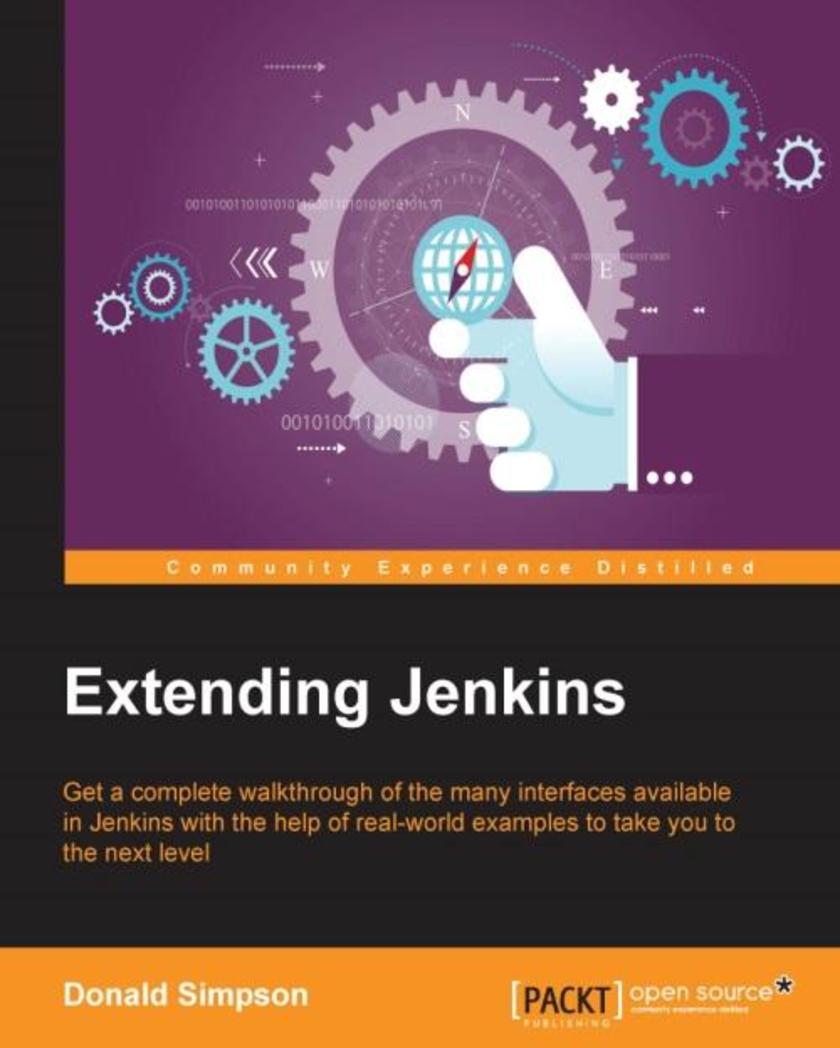
Extending Jenkins
¥63.21
Get a complete walkthrough of the many interfaces available in Jenkins with the help of real-world examples to take you to the next level with Jenkins About This Book Find out how to interact with Jenkins from within Eclipse, NetBeans, and IntelliJ IDEA Develop custom solutions that act upon Jenkins information in real time A step-by-step, practical guide to help you learn about extension points in existing plugins and how to build your own plugin Who This Book Is For This book is aimed primarily at developers and administrators who are interested in taking their interaction and usage of Jenkins to the next level. The book assumes you have a working knowledge of Jenkins and programming in general, and an interest in learning about the different approaches to customizing and extending Jenkins so it fits your requirements and your environment perfectly. What You Will Learn Retrieve and act upon Jenkins information in real time Find out how to interact with Jenkins through a variety of IDEs Develop your own Form and Input validation and customization Explore how Extension points work, and develop your own Jenkins plugin See how to use the Jenkins API and command-line interface Get to know how to remotely update your Jenkins configuration Design and develop your own Information Radiator Discover how Jenkins customization can help improve quality and reduce costs In Detail Jenkins CI is the leading open source continuous integration server. It is written in Java and has a wealth of plugins to support the building and testing of virtually any project. Jenkins supports multiple Software Configuration Management tools such as Git, Subversion, and Mercurial. This book explores and explains the many extension points and customizations that Jenkins offers its users, and teaches you how to develop your own Jenkins extensions and plugins. First, you will learn how to adapt Jenkins and leverage its abilities to empower DevOps, Continuous Integration, Continuous Deployment, and Agile projects. Next, you will find out how to reduce the cost of modern software development, increase the quality of deliveries, and thereby reduce the time to market. We will also teach you how to create your own custom plugins using Extension points. Finally, we will show you how to combine everything you learned over the course of the book into one real-world scenario. Style and approach Extending Jenkins explores and explains advanced Jenkins functionality from a practical point of view, teaching you real-world skills that will help you get more from this powerful software. Each key topic is explained clearly with a practical example, and in sufficient detail so you understand the concepts and can then develop your own solutions using your preferred software and languages.
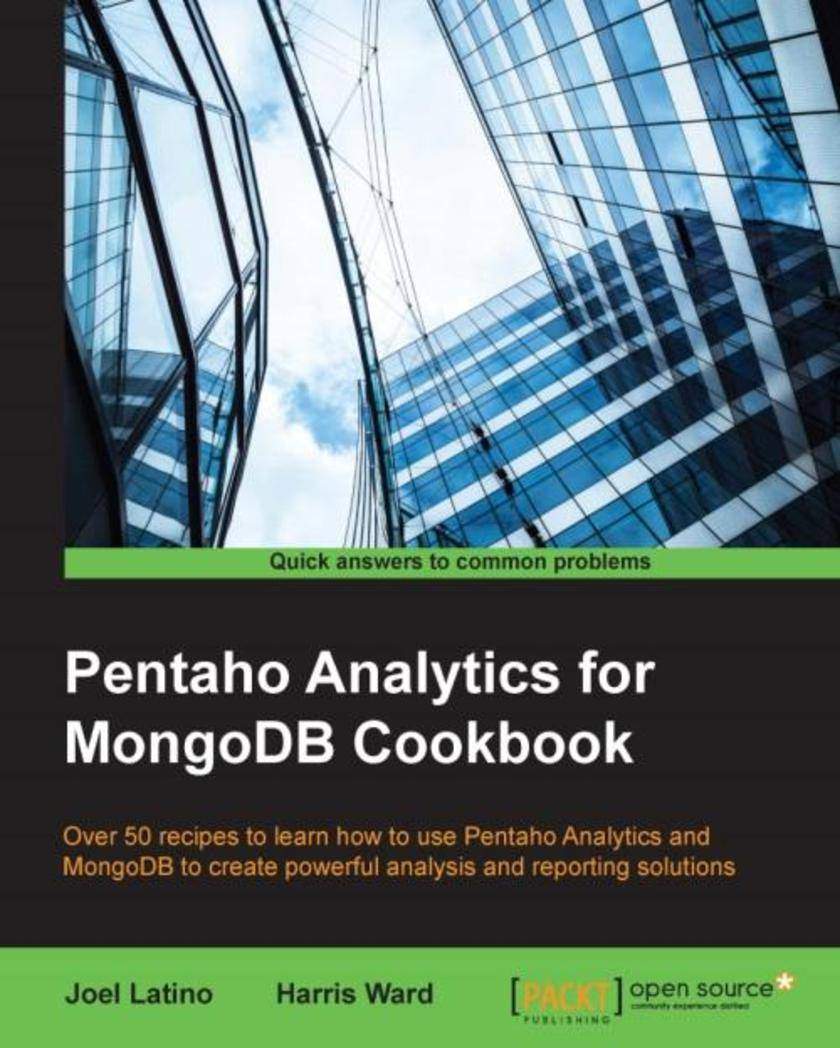
Pentaho Analytics for MongoDB Cookbook
¥80.65
Over 50 recipes to learn how to use Pentaho Analytics and MongoDB to create powerful analysis and reporting solutions About This Book Create reports and stunning dashboards with MongoDB data Accelerate data access and maximize productivity with unique features of Pentaho for MongoDB A step-by-step recipe-based guide for making full use of Pentaho suite tools with MongoDB Who This Book Is For This book is intended for data architects and developers with a basic level of knowledge of MongoDB. Familiarity with Pentaho is not expected. What You Will Learn Extract, load, and transform data from MongoDB collections to other datasources Design Pentaho Reports using different types of connections for MongoDB Create a OLAP mondrian schema for MongoDB Explore your MongoDB data using Pentaho Analyzer Utilize the drag and drop web interface to create dashboards Use Kettle Thin JDBC with MongoDB for analysis Integrate advanced dashboards with MondoDB using different types of connections Publish and run a report on Pentaho BI server using a web interface In Detail MongoDB is an open source, schemaless NoSQL database system. Pentaho as a famous open source Analysis tool provides high performance, high availability, and easy scalability for large sets of data. The variant features in Pentaho for MongoDB are designed to empower organizations to be more agile and scalable and also enables applications to have better flexibility, faster performance, and lower costs. Whether you are brand new to online learning or a seasoned expert, this book will provide you with the skills you need to create turnkey analytic solutions that deliver insight and drive value for your organization. The book will begin by taking you through Pentaho Data Integration and how it works with MongoDB. You will then be taken through the Kettle Thin JDBC Driver for enabling a Java application to interact with a database. This will be followed by exploration of a MongoDB collection using Pentaho Instant view and creating reports with MongoDB as a datasource using Pentaho Report Designer. The book will then teach you how to explore and visualize your data in Pentaho BI Server using Pentaho Analyzer. You will then learn how to create advanced dashboards with your data. The book concludes by highlighting contributions of the Pentaho Community. Style and approach A comprehensive, recipe-based guide to take complete advantage of the Pentaho Analytics for MongoDB.
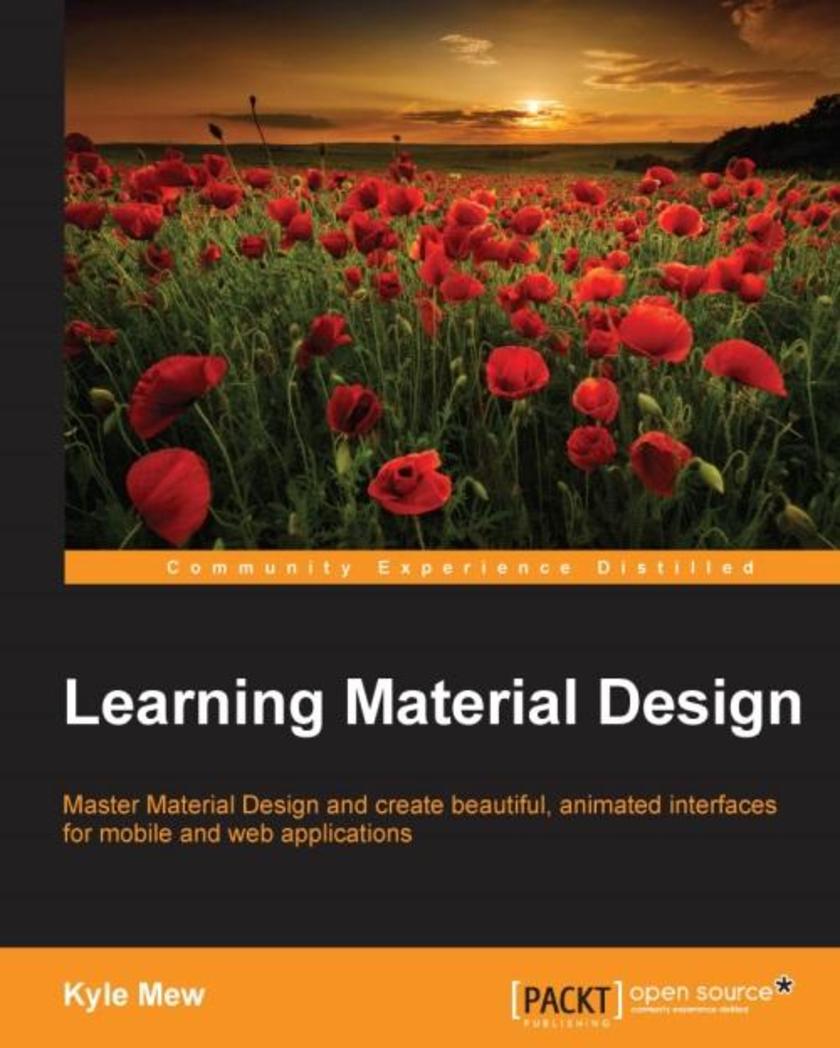
Learning Material Design
¥63.21
Master Material Design and create beautiful, animated interfaces for mobile and web applications About This Book Master the highly acclaimed Material Design paradigm and give your apps and pages the look that everyone is talking about Get a mix of key theoretical concepts combined with enough practical examples to put each theory into practice so you can create elegant material interfaces with Android Studio and Polymer Written by Kyle Mew, successful author with over a decade of mobile and web development experience, this book has both the touch of a developer as well as an experienced writer Who This Book Is For This book is ideal for web developers and designers who are interested in implementing Material Design in their mobile and web apps. No prior knowledge or experience of Material Design is required, but some familiarity with procedural languages such as Java and markup languages such as HTML will provide an advantage. What You Will Learn Implement Material Design on both mobile and web platforms that work on older handsets and browsers Design stylish layouts with the Material Theme Create and manage cards, lists, and grids Design and implement sliding drawers for seamless navigation Coordinate components to work together Animate widgets and create transitions and animation program flow Use Polymer to bring Material Design to your web pages In Detail Google's Material Design language has taken the web development and design worlds by storm. Now available on many more platforms than Android, Material Design uses color, light, and movements to not only generate beautiful interfaces, but to provide intuitive navigation for the user. Learning Material Design will teach you the fundamental theories of Material Design using code samples to put these theories into practice. Focusing primarily on Android Studio, you’ll create mobile interfaces using the most widely used and powerful material components, such as sliding drawers and floating action buttons. Each section will introduce the relevant Java classes and APIs required to implement these components. With the rules regarding structure, layout, iconography, and typography covered, we then move into animation and transition, possibly Material Design's most powerful concept, allowing complex hierarchies to be displayed simply and stylishly. With all the basic technologies and concepts mastered, the book concludes by showing you how these skills can be applied to other platforms, in particular web apps, using the powerful Polymer library. Style and approach Learning Material Design combines the theories behind material design with practical examples of how these can be implemented and further reinforcing the guidelines covering style, layout and structure.
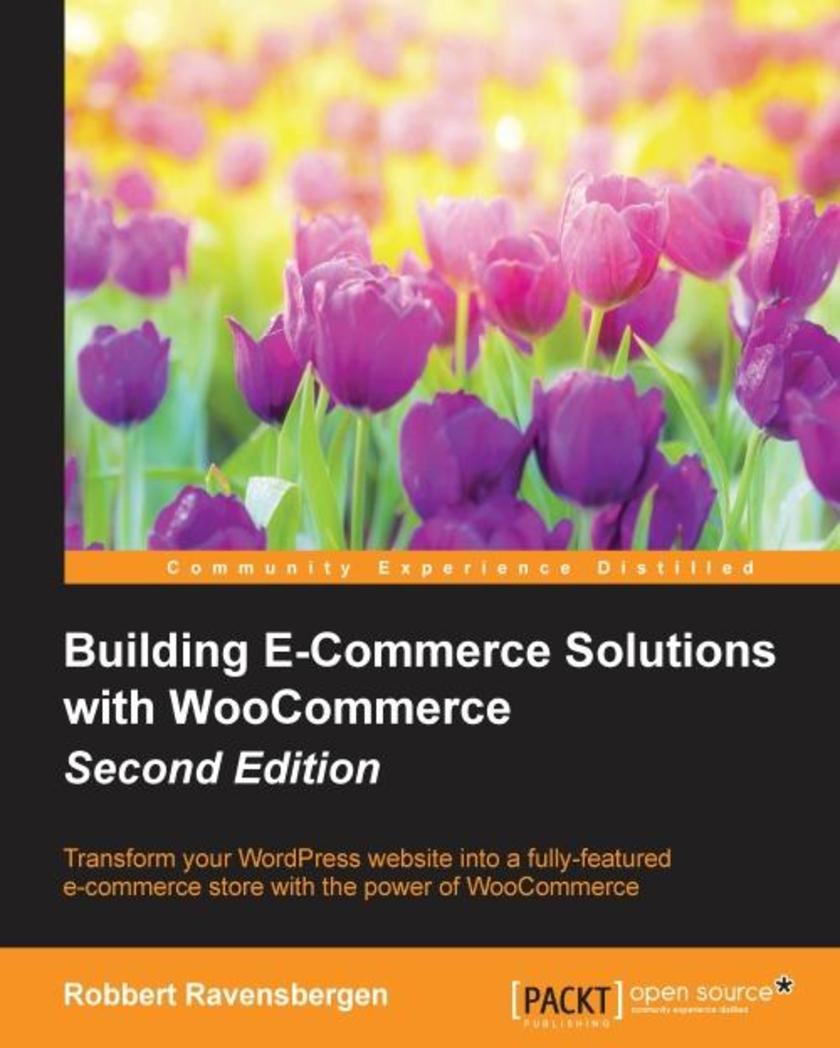
Building E-Commerce Solutions with WooCommerce - Second Edition
¥63.21
Transform your WordPress website into a fully-featured e-commerce store with the power of WooCommerce About This Book Offers do-it-yourself e-commerce solution using WordPress and WooCommerce Discover the new Onboarding wizard that makes complex processes user-friendly Manage your online store and expand its functions using plugins Who This Book Is For This book is suitable for everybody running their own WordPress website, such as small business owners and marketers. It has been written for users, not for programmers, who want to add e-commerce functionality to their existing WordPress website. The book will also appeal to Web design agencies working with WordPress and looking for ways to improve their services for clients working with WordPress. What You Will Learn Use WooCommerce settings to set up the behavior of the online store Get familiar with the downloadable and variable products Set up shipping and payment methods Use discount coupons for marketing purposes Choose the right WooCommerce theme for your online store Customize your website using the Storefront theme as a base Handle orders, payments, and emails on a daily basis with ease Work with WooCommerce reporting possibilities Expanding your online store with the functionalities offered by WooCommerce In Detail Building an online store is often considered to be a difficult, complex task. Using the combination of WordPress and the WooCommerce plugin, this is no longer the case. WooCommerce is the most popular e-commerce platform for WordPress and is being rapidly developed by WooThemes. It provides a strong e-commerce solution to set up your own online store in just a couple of hours. This easy and practical book will help you make the most of WooCommerce to be able to set up and run your online store yourself. Installing WooCommerce is an easy task, but this book will explain in detail all the possible settings. After that you'll be adding products, different payment methods, and shipping solutions to your store. You will then customize your store by adding themes to change the look and feel. Once your store is running, you'll learn how to use discount coupons, process your orders, look at reports, and even expand the functionality further with additional plugins. By the end of the book, you will learn everything you need to add a fully functional online store to you WordPress website and start running an online business. Style and approach This book is a practical, step-by-step guide that will help you manage your online store easily and efficiently, and expand its functions using the WooCommerce plug-in
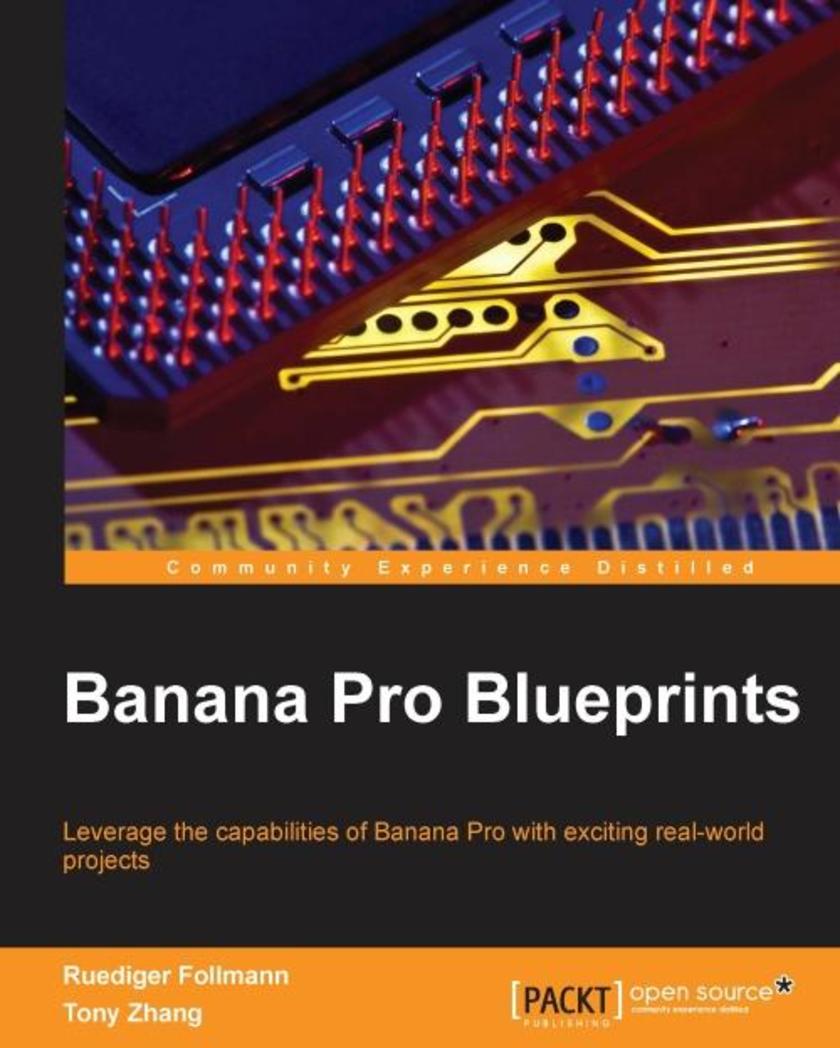
Banana Pro Blueprints
¥90.46
Leverage the capability of Banana Pi with exciting real-world projects About This Book Delve into the expanse of Banana Pi’s self-managing functionalities and develop real-world projects Gain hands-on experience of developing various wireless, multimedia, robotic, and sensor-based applications with Banana Pi Develop your applications using Banana Pi through a project-based approach Who This Book Is For This book is designed for those who are interested in exploring the capabilities of Banana Pro. Basic know-how of Linux and embedded systems would be an added advantage. What You Will Learn Remotely connect to Banana Pro and program the embedded board Use Banana Pro as a hotspot or provide an AirPlay server for wireless audio transmission Find out about the different programming languages that can be used with Banana Pro Build and program your own multimedia centre in order to watch television and movies Connect peripherals such as a camera, LCD, or hard disk to Banana Pro Manage and regulate your Linux system with Banana Pro Stream music wirelessly from your mobile phone to Banana Pro In Detail This book follows a tactical plan that will guide you through the implementation of Banana Pro and its configurations. You will then learn the various programming languages used with Banana Pi with the help of examples. In no time at all, you’ll be working on a wireless project that implements AirPlay servers, hotspots, and so on. Following this, you’ll develop a retro-style arcade kiosk game. Then we’ll move on to explore the multimedia features of Banana Pro by designing and building an enclosure for it. After this, you’ll learn to build a remote-controlled smart car and we’ll examine how to control a robotic arm. The book will conclude with the creation of a home sensor system that has the ability to expand or shrink to suit any home. Style and approach This book follows a project-based approach that covers the most important features of Banana Pro. Every chapter dives into the practical side of the implementation.
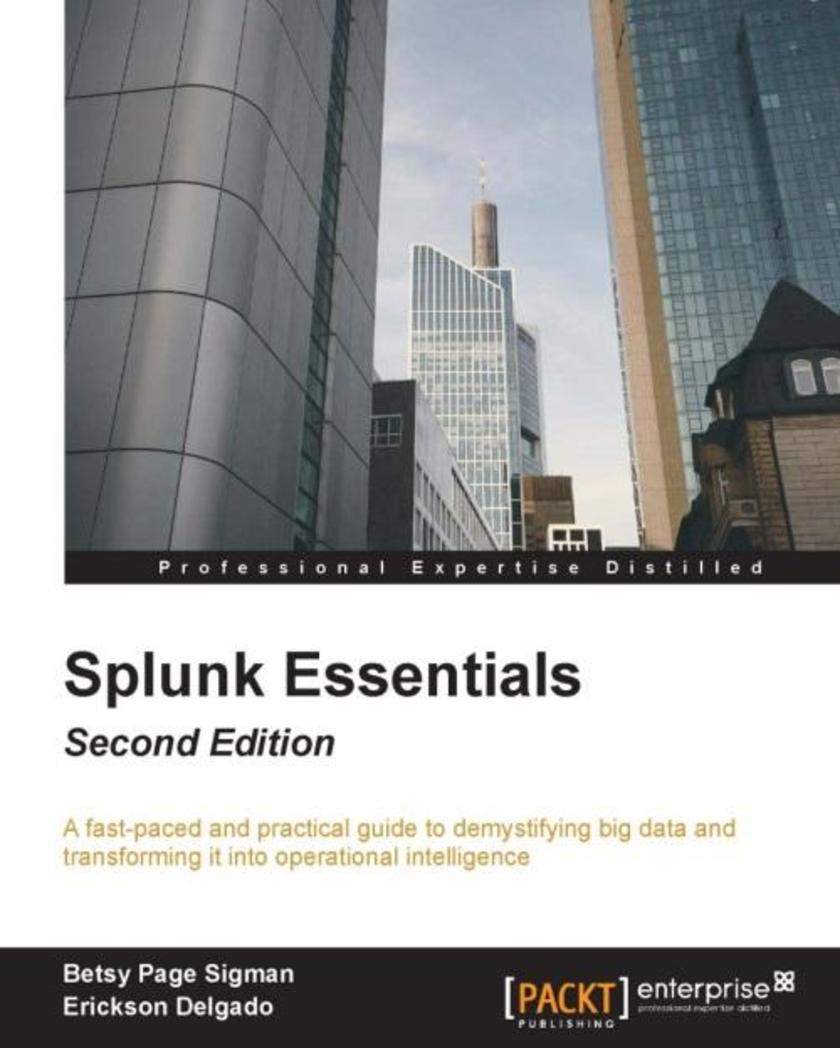
Splunk Essentials - Second Edition
¥71.93
A fast-paced and practical guide to demystifying big data and transforming it into operational intelligence About This Book Want to get started with Splunk to analyze and visualize machine dataOpen this book and step into the world of Splunk. Leverage the exceptional analysis and visualization capabilities to make informed decisions for your business This easy-to-follow, practical book can be used by anyone, even if you have never managed any data before Who This Book Is For This book will be perfect for you if you are a Software engineer or developer or System administrators or Business analyst who seek to correlate machine data with business metrics and provide intuitive real-time and statistical visualizations. Some knowledge or experience of previous versions of Splunk will be helpful but not essential. What You Will Learn Install and configure Splunk Gather data from different sources, isolate them by indexes, classify them into source types, and tag them with the essential fields Be comfortable with the Search Processing Language and get to know the best practices in writing search queries Create stunning and powerful dashboards Be proactive by implementing alerts and scheduled reports Use the Splunk SDK and integrate Splunk data into other applications Implement the best practices in using Splunk. In Detail Splunk is a search, analysis, and reporting platform for machine data, which has a high adoption on the market. More and more organizations want to adopt Splunk to use their data to make informed decisions. This book is for anyone who wants to manage data with Splunk. You’ll start with very basics of Splunk— installing Splunk—and then move on to searching machine data with Splunk. You will gather data from different sources, isolate them by indexes, classify them into source types, and tag them with the essential fields. After this, you will learn to create various reports, XML forms, and alerts. You will then continue using the Pivot Model to transform the data models into visualization. You will also explore visualization with D3 in Splunk. Finally you’ll be provided with some real-world best practices in using Splunk. Style and approach This fast-paced, example-rich guide will help you analyze and visualize machine data with Splunk through simple, practical instructions.
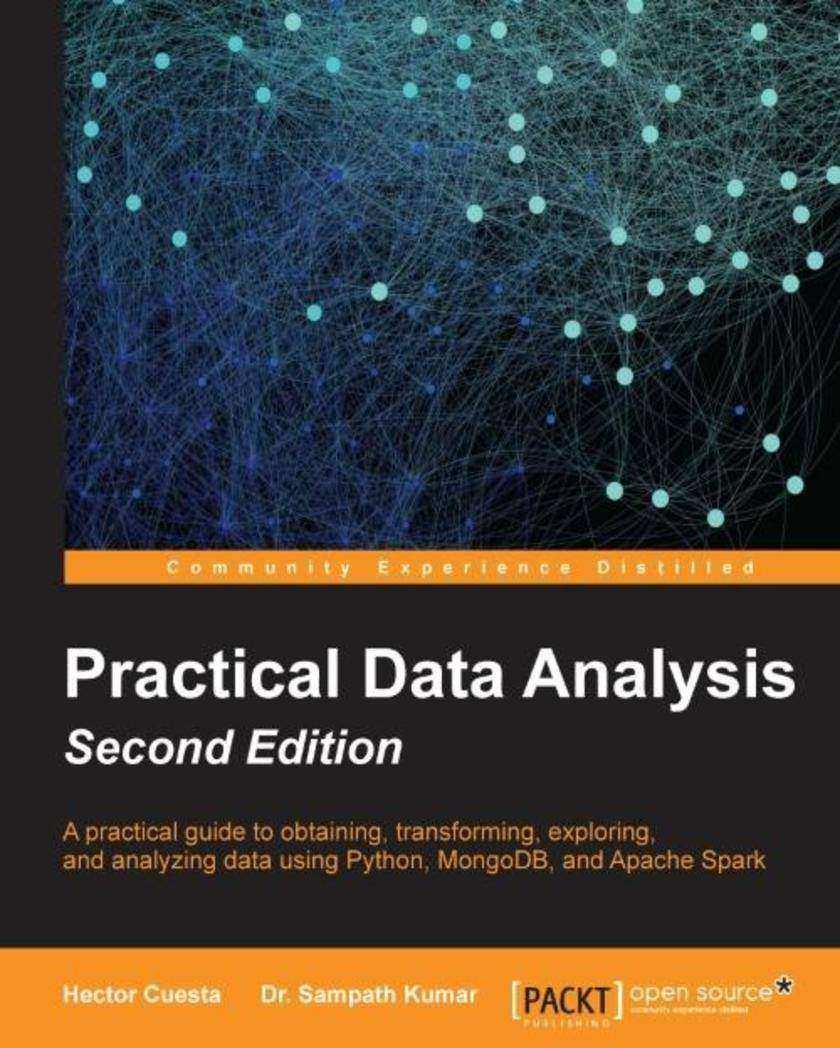
Practical Data Analysis - Second Edition
¥90.46
A practical guide to obtaining, transforming, exploring, and analyzing data using Python, MongoDB, and Apache Spark About This Book Learn to use various data analysis tools and algorithms to classify, cluster, visualize, simulate, and forecast your data Apply Machine Learning algorithms to different kinds of data such as social networks, time series, and images A hands-on guide to understanding the nature of data and how to turn it into insight Who This Book Is For This book is for developers who want to implement data analysis and data-driven algorithms in a practical way. It is also suitable for those without a background in data analysis or data processing. Basic knowledge of Python programming, statistics, and linear algebra is assumed. What You Will Learn Acquire, format, and visualize your data Build an image-similarity search engine Generate meaningful visualizations anyone can understand Get started with analyzing social network graphs Find out how to implement sentiment text analysis Install data analysis tools such as Pandas, MongoDB, and Apache Spark Get to grips with Apache Spark Implement machine learning algorithms such as classification or forecasting In Detail Beyond buzzwords like Big Data or Data Science, there are a great opportunities to innovate in many businesses using data analysis to get data-driven products. Data analysis involves asking many questions about data in order to discover insights and generate value for a product or a service. This book explains the basic data algorithms without the theoretical jargon, and you’ll get hands-on turning data into insights using machine learning techniques. We will perform data-driven innovation processing for several types of data such as text, Images, social network graphs, documents, and time series, showing you how to implement large data processing with MongoDB and Apache Spark. Style and approach This is a hands-on guide to data analysis and data processing. The concrete examples are explained with simple code and accessible data.
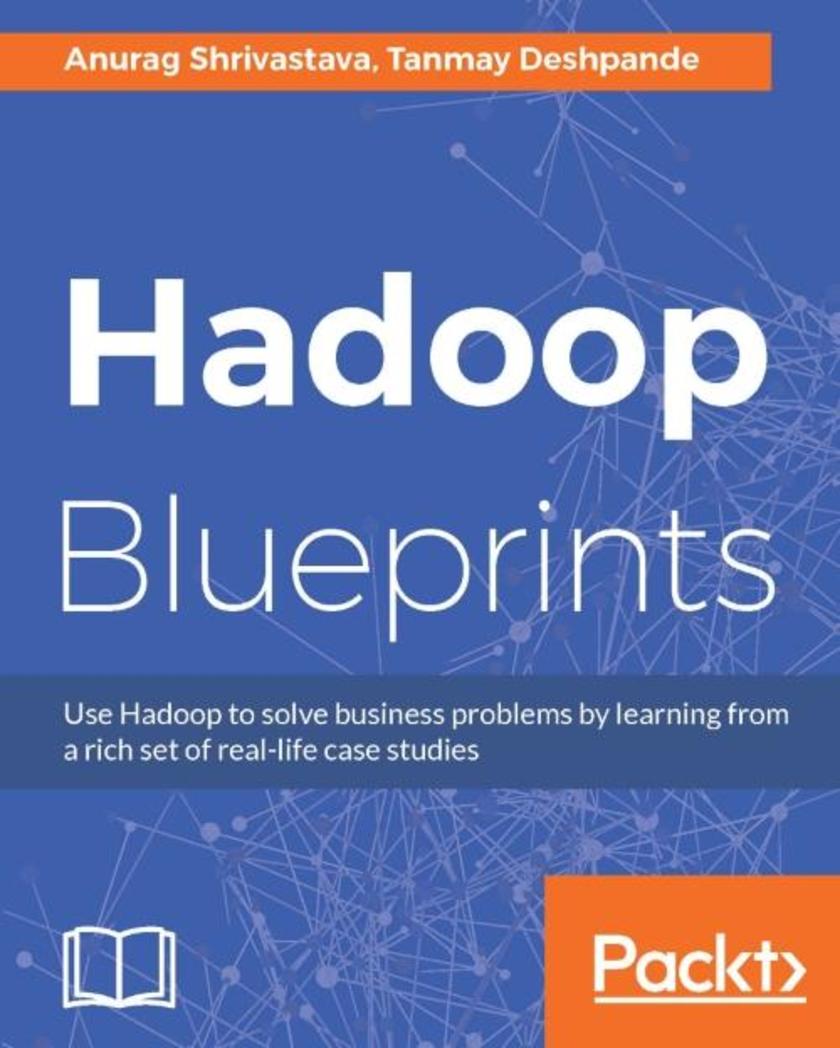
Hadoop Blueprints
¥80.65
Use Hadoop to solve business problems by learning from a rich set of real-life case studies About This Book Solve real-world business problems using Hadoop and other Big Data technologies Build efficient data lakes in Hadoop, and develop systems for various business cases like improving marketing campaigns, fraud detection, and more Power packed with six case studies to get you going with Hadoop for Business Intelligence Who This Book Is For If you are interested in building efficient business solutions using Hadoop, this is the book for you This book assumes that you have basic knowledge of Hadoop, Java, and any *ing language. What You Will Learn Learn about the evolution of Hadoop as the big data platform Understand the basics of Hadoop architecture Build a 360 degree view of your customer using Sqoop and Hive Build and run classification models on Hadoop using BigML Use Spark and Hadoop to build a fraud detection system Develop a churn detection system using Java and MapReduce Build an IoT-based data collection and visualization system Get to grips with building a Hadoop-based Data Lake for large enterprises Learn about the coexistence of NoSQL and In-Memory databases in the Hadoop ecosystem In Detail If you have a basic understanding of Hadoop and want to put your knowledge to use to build fantastic Big Data solutions for business, then this book is for you. Build six real-life, end-to-end solutions using the tools in the Hadoop ecosystem, and take your knowledge of Hadoop to the next level. Start off by understanding various business problems which can be solved using Hadoop. You will also get acquainted with the common architectural patterns which are used to build Hadoop-based solutions. Build a 360-degree view of the customer by working with different types of data, and build an efficient fraud detection system for a financial institution. You will also develop a system in Hadoop to improve the effectiveness of marketing campaigns. Build a churn detection system for a telecom company, develop an Internet of Things (IoT) system to monitor the environment in a factory, and build a data lake – all making use of the concepts and techniques mentioned in this book. The book covers other technologies and frameworks like Apache Spark, Hive, Sqoop, and more, and how they can be used in conjunction with Hadoop. You will be able to try out the solutions explained in the book and use the knowledge gained to extend them further in your own problem space. Style and approach This is an example-driven book where each chapter covers a single business problem and describes its solution by explaining the structure of a dataset and tools required to process it. Every project is demonstrated with a step-by-step approach, and explained in a very easy-to-understand manner.
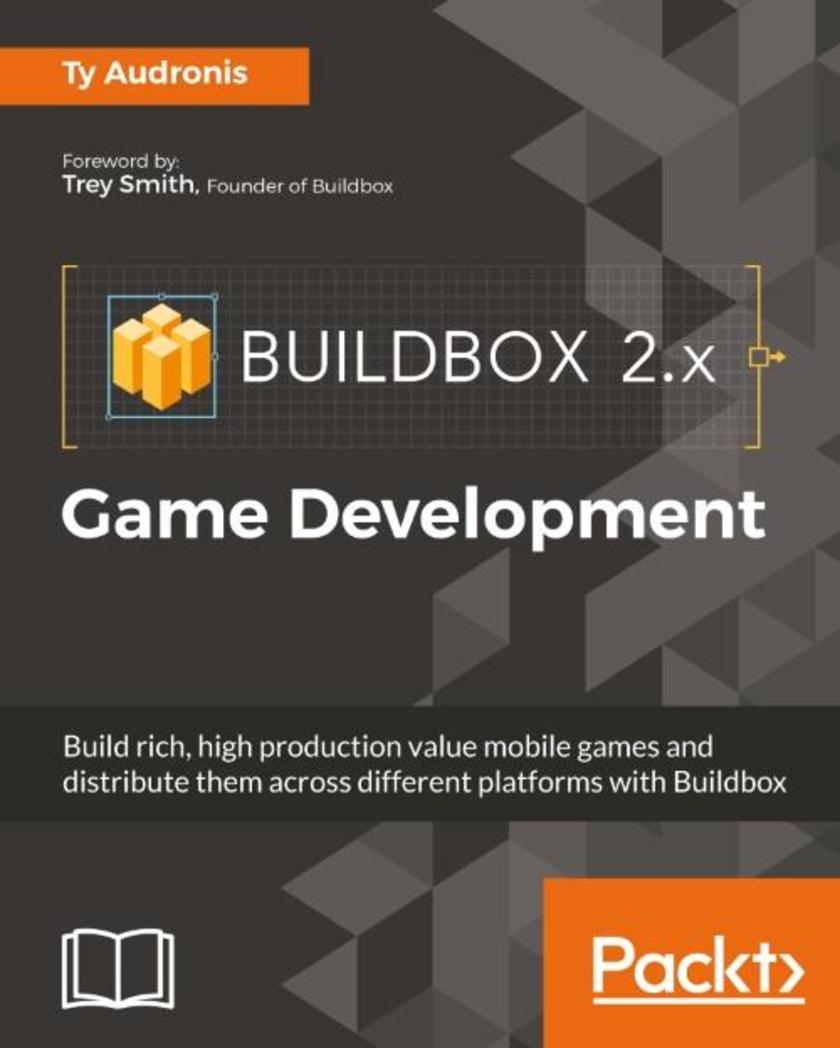
Buildbox 2.x Game Development
¥80.65
Build rich, high production value mobile games and distribute them across different platforms with Buildbox About This Book Create captivating 2D & 2.5D (isometric) video games for all platforms Leverage Buildbox to monetize and prepare your games for distribution This step-by-step tutorial will get you generating complex and media rich games with no coding experience Who This Book Is For This book caters to those who have an interest or desire to create their own mobile games either as a hobbyist or who are looking to enhance their skills as a professional games developer. No coding experience is required. What You Will Learn Create the illusion of a 3D background in your game using parallax Add advanced controls and obstacles to our first world Develop assets (graphic and audio) for the Buildbox engine Design games based on the capabilities and limitations of Buildbox and their target platforms Compile and distribute video games on various channels such as Steam, iOS store, Android stores, and the Mac App Store Optimize your games to get the absolute best quality within platform restrictions Conquer common issues experienced with Buildbox development In Detail Buildbox is an “any skill level” development platform to develop video games with no coding experience. It also exports these games to be compiled for any platform (from Windows to Mac to iOS to Android and Blackberry) all using the same graphic user interface. Using an example as a tutorial, we will relate the driving principles and you’ll see how you can implement these principles to develop any games on the platform. We begin by setting expectations and providing a brief overview of the software. But it’s not long before you “dive in” to creating your first video game. You will actually have a playable level (“world”) by the end of the second chapter. Later on, you’ll learn everything from basic graphics creation to advanced world design while you refine your first game, called “Ramblin’ Rover.” All along the way, you will see how certain functions could be used in tandem to create other types of games; hoping to spark imagination. We will follow the principles and process of monetization through ads and in-game rewards. Lastly, we will go through the process of exporting, compiling, and preparing your storefront to sell the games you will eventually create. Style and approach This book follows a tutorial-based approach that teaches through examples, while also providing the necessary principles to enable you to abstract these principles into any game you want to make.
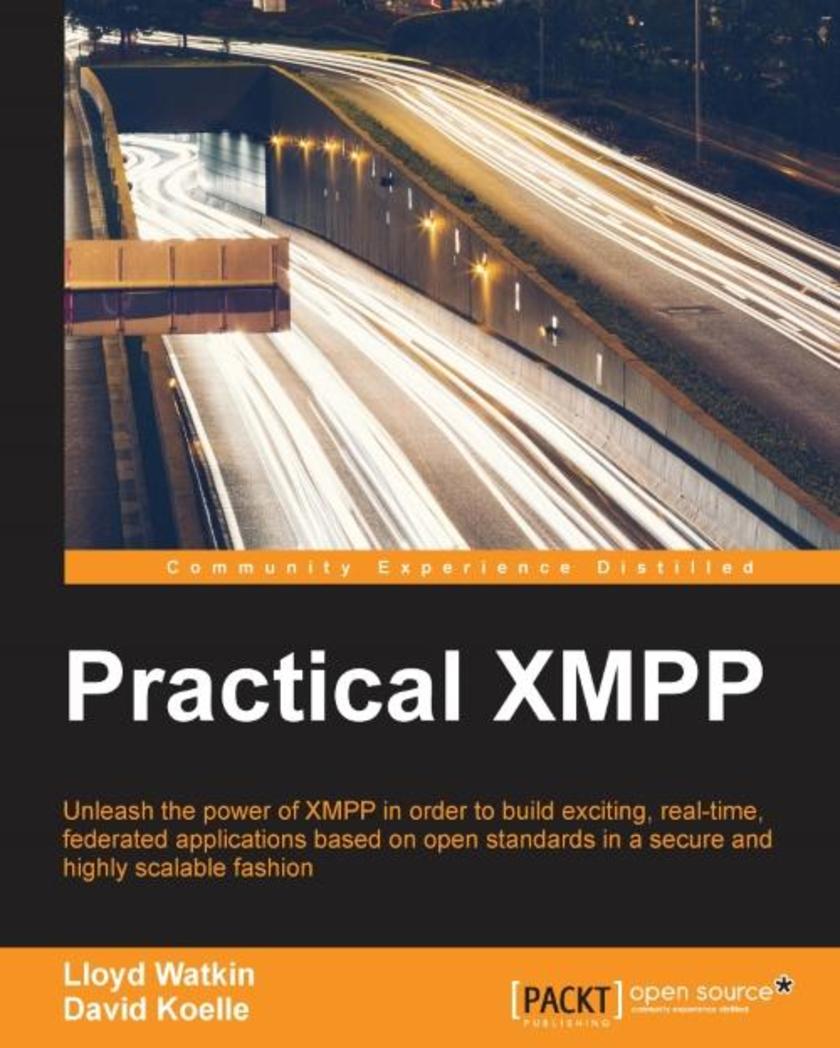
Practical XMPP
¥80.65
Unleash the power of XMPP in order to build exciting, real-time, federated applications based on open standards in a secure and highly scalable fashion About This Book Learn about the fundamentals of XMPP and be able to work with the core functionality both server-side and in the browser Build a simple 1-to-1 chat (the “Hello World” of XMPP), explore multi-user chat, publish subscribe systems, and work with a decentralized social network Author Lloyd Watkins is a member of the XMPP standards committee Who This Book Is For If you want to learn about the fundamentals of XMPP, be able to work with the core functionality both server-side and in the browser then this book is for you.No knowledge of XMPP is required, or of TCP/IP networking. It's important that you already know how to build applications of some form, and are looking get a better understanding of how to implement XMPP for one or more of its many uses. You should be interested in the decentralized web, know HTML, and likely know JavaScript and NodeJS. You will probably know JSON, and hopefully XML (this is the native output of XMPP). What You Will Learn Install and configure an XMPP server and use it to connect from a traditional desktop client and send a message Build a simple server-side application that will respond to messages from our logged in desktop client Install and run XMPP-FTW, connect to the server from the browser, and handle incoming/outgoing messages Connect to a multi-user chat room, send/receive stanzas, add a room password, join a protected room, set the room’s subject, and change a user's affiliation Get to grips with the publish-subscribe extension of XMPP and use it to build a pusher system that can make any website real-time Build a simple XMPP component and create an extension for XMPP-FTW that allows you to use your own custom format Build an XMPP version of the classic game “Pong” In Detail XMPP (eXtensible Messaging and Presence Protocol) is a messaging protocol that enables communication between two or more devices via the Internet. With this book, developers will learn about the fundamentals of XMPP, be able to work with the core functionality both server-side and in the browser, as well as starting to explore several of the protocol extensions. You will not only have a solid grasp of XMPP and how it works, but will also be able to use the protocol to build real-world applications that utilize the power of XMPP. By the end of this book, you will know more about networking applications in general, and have a good understanding of how to extend XMPP, as well as using it in sample applications. Style and approach Through a number of hands-on projects, this book shows you how to build usable applications that highlights a feature of XMPP.
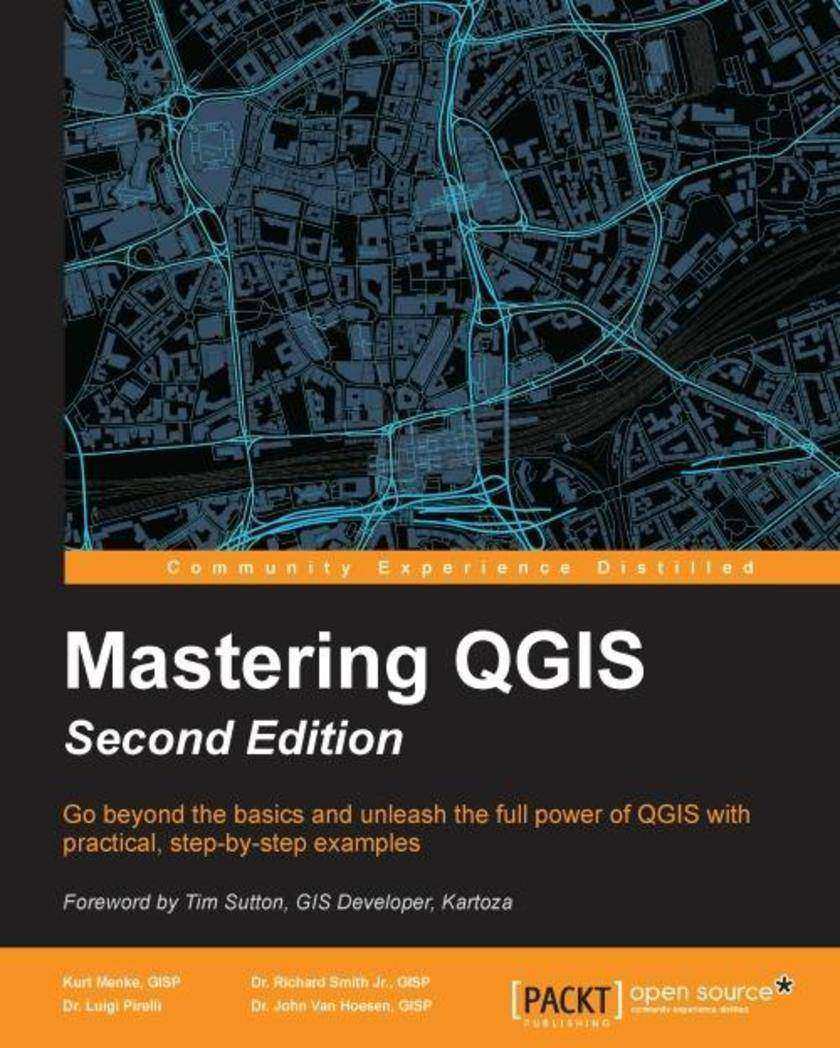
Mastering QGIS - Second Edition
¥99.18
Go beyond the basics and unleash the full power of QGIS with practical, step-by-step examples About This Book This book is your one-stop solution to all of your GIS needs using the open source QGIS Master QGIS by learning about database integration, geoprocessing tools, Python *s, advanced cartography, and custom plugins This example-rich, practical guide will help you create sophisticated analyses and maps Who This Book Is For If you are a GIS professional, a consultant, a student, or perhaps a fast learner who wants to go beyond the basics of QGIS, then this book is for you. It will prepare you to realize the full potential of QGIS. What You Will Learn Create and manage a spatial database Get to know advanced techniques to style GIS data Prepare both vector and raster data for processing Add heat maps, live layer effects, and labels to your maps Master LAStools and GRASS integration with the Processing Toolbox Edit and repair topological data errors Automate workflows with batch processing and the QGIS Graphical Modeler Integrate Python *ing into your data processing workflows Develop your own QGIS plugin In Detail QGIS is an open source solution to GIS. It is widely used by GIS professionals all over the world. It is the leading alternative to the proprietary GIS software. Although QGIS is described as intuitive, it is also by default complex. Knowing which tools to use and how to apply them is essential to producing valuable deliverables on time. Starting with a refresher on the QGIS basics, this book will take you all the way through to creating your first custom QGIS plugin. From the refresher, we will recap how to create, populate, and manage a spatial database. You’ll also walk through styling GIS data, from creating custom symbols and color ramps to using blending modes. In the next section, you will discover how to prepare vector, heat maps, and create live layer effects, labeling, and raster data for processing. You’ll also discover advanced data creation and editing techniques. The last third of the book covers the more technical aspects of QGIS such as using LAStools and GRASS GIS’s integration with the Processing Toolbox, how to automate workflows with batch processing, and how to create graphical models. Finally, you will see how to create and run Python data processing *s and write your own QGIS plugin with pyqgis. By the end of the book, you will understand how to work with all the aspects of QGIS, and will be ready to use it for any type of GIS work. Style and approach This step-by-step comprehensive guide will let you dig your teeth into working with spatial databases, creating your own QGIS plugins, and creating your own custom graphical models.
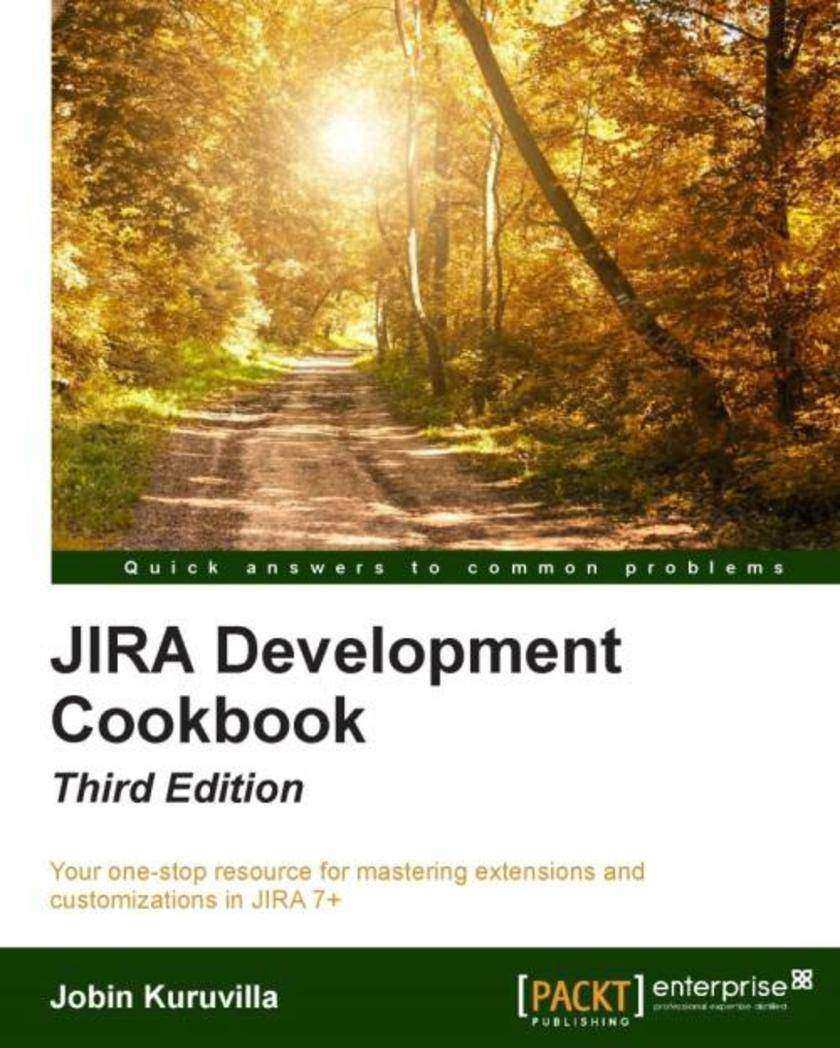
JIRA Development Cookbook - Third Edition
¥107.90
Your one-stop resource for mastering extensions and customizations in JIRA 7+ About This Book Explore the new features of JIRA 7 and best practices for agile development and integration with development tools Customize the look and feel of your JIRA UI to match your specific user needs Create seamless reports that make sense of your data through easy-to-use techniques Who This Book Is For If you are a JIRA developer or administrator, or a project manager who wants to fully exploit the exciting capabilities of JIRA, then this is the perfect book for you. What You Will Learn Create and deploy your own JIRA plugins Manipulate workflows to transform JIRA into a user-friendly system Create custom reports that show statistics for particular people, projects, versions, or other fields within issues Simplify reporting by writing your own JIRA gadgets, which can be added into a user's dashboard Master database handling by extending and retrieving custom field details from the database Deal with custom fields on an issue and program custom field option In Detail JIRA provides issue and project tracking for software development teams to improve code quality and the speed of development. With the new version of JIRA, you can create your own JIRA plugins and customize the look and feel of your JIRA UI easier than ever. JIRA Development Cookbook , Third Edition, is a one-stop resource to master extensions and customizations in JIRA. This book starts with recipes about simplifying the plugin development process followed by recipes dedicated to the plugin framework. Then, you will move on to writing custom field plugins to create new field types or custom searchers. You will also learn how to program and customize workflows to transform JIRA into a user-friendly system. With so much data spanning different projects, issues, and so on, we will cover how to work on reports and gadgets to get customized data according to our needs. At the end of the book, you will learn how to customize JIRA by adding new tabs, menus, and web items; communicate with JIRA via the REST APIs; and work with the JIRA database. Style and approach The most unique aspect of this book is its approach. This book is recipe-based, with real-world examples, that will empower you to implement agile processes and explore the exciting capabilities of Jira.
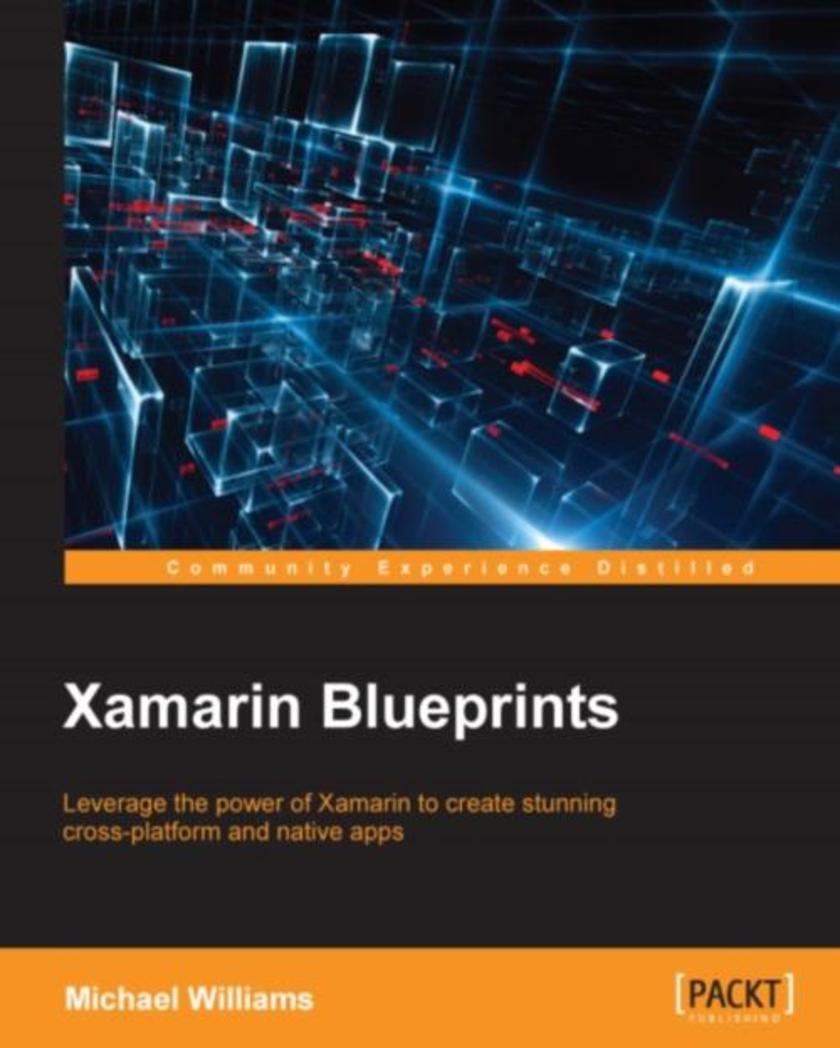
Xamarin Blueprints
¥99.18
Leverage the power of Xamarin to create stunning cross-platform and native apps About This Book Helps you get a clear practical understanding of creating professional-grade apps with Xamarin Covers Xamarin.Forms, Xamarin Android, and Xamarin iOS If you want to transform yourself from an amateur mobile developer into a professional app developer across multiple platforms, then this is the ideal book for you Who This Book Is For If you are a mobile developer looking to create interesting and fully featured apps for different platforms, then this book is the ideal solution for you. A basic knowledge of Xamarin and C# programming is assumed What You Will Learn Discover eight different ways to create your own Xamarin applications Improve app performance by using SQLite for data-intensive applications Set up a simple web service to feed JSON data into mobile applications Store files locally with Xamarin.Forms using dependency services Use Xamarin extension libraries to create effective applications with less coding In Detail Do you want to create powerful, efficient, and independent apps from scratch that will leverage the Xamarin framework and code with C#Well, look no further; you’ve come to the right place! This is a learn-as-you-build practical guide to building eight full-fledged applications using Xamarin.Forms, Xamarin Android, and Xamarin iOS. Each chapter includes a project, takes you through the process of building applications (such as a gallery Application, a text-to-speech service app, a GPS locator app, and a stock market app), and will show you how to deploy the application’s source code to a Google Cloud Source Repository. Other practical projects include a chat and a media-editing app, as well as other examples fit to adorn any developer’s utility belt. In the course of building applications, this book will teach you how to design and prototype professional-grade applications implementing performance and security considerations. Style and approach A project-based approach that will solve all your needs when it comes to creating native Android, iOS, and cross-platform apps efficiently and effectively.




 购物车
购物车 个人中心
个人中心



